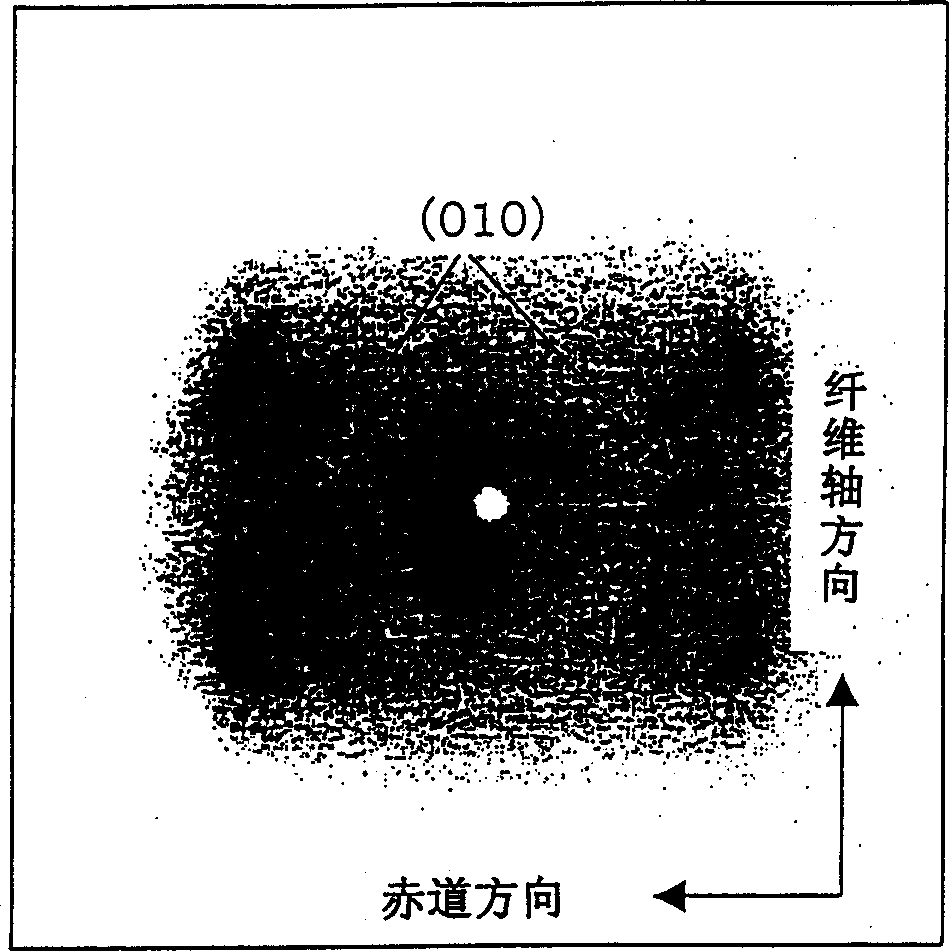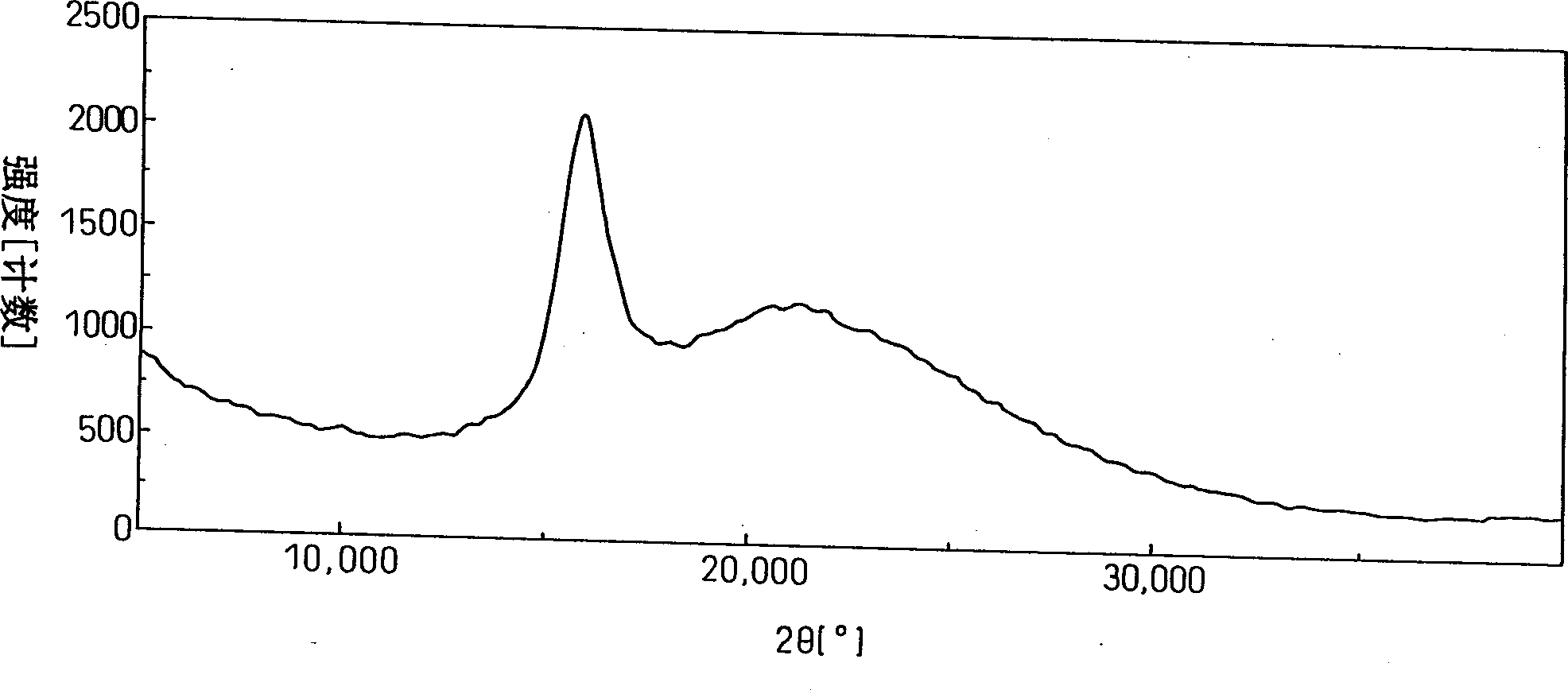Polytrimethylene terephthalate fiber and process for producing the same
A technology of polytrimethylene terephthalate and trimethylene phthalate, which is applied in the field of polytrimethylene terephthalate fiber and its manufacture
- Summary
- Abstract
- Description
- Claims
- Application Information
AI Technical Summary
Problems solved by technology
Method used
Image
Examples
Embodiment 1~7
[0428] Add dimethyl terephthalate and 1,3-propanediol into the reactor at a molar ratio of 1:2, then add titanium tetrabutoxide equivalent to 0.1wt% of dimethyl terephthalate, under normal pressure The transesterification reaction was completed under the condition that the heater temperature was 240°C. Then add trimethyl phosphate equivalent to 0.05wt% of dimethyl terephthalate, 0.1wt% titanium tetrabutoxide and titanium dioxide equivalent to 0.5wt% of theoretical polymer weight, and react at 270°C for 3 hours .
[0429] As titanium dioxide, anatase-type crystalline titanium dioxide having an average particle diameter of 0.2 μm was used. The titanium dioxide was dispersed in 1,3-propanediol at a ratio of 20 wt % using a homogenizer, centrifuged at 6000 rpm for 30 minutes, and then filtered with a 5 μm membrane filter. Immediately before adding the obtained dispersion to the reaction system, it was stirred and then added.
[0430] The obtained polymer was placed in a nitroge...
Embodiment 8
[0436] According to the same steps as in Example 1 and the conditions shown in Table 1, a fiber of 56dtex / 24f was obtained. Table 2 shows the physical properties of the obtained fibers.
[0437] The obtained fibers corresponded to the scope of the present invention, and no filament breakage or napping was observed during spinning. In addition, the wound cheese package can be easily pulled out of the mandrel, and the expansion rate is in a good range.
Embodiment 9、10
[0439] In addition to not adding titanium tetrabutoxide during the transesterification reaction but adding 0.1 wt% of dimethyl terephthalate to a mixture formed by calcium acetate and cobalt acetate tetrahydrate in a ratio of 7:1, and in the In the region where the fibers are heated, except for the equipment shown in Figure 6(A), the rest are operated according to the same steps as in Example 1 and the conditions shown in Table 1 to obtain fibers of 126dtex / 36f. At this time, heating is performed by the second roll 16 shown in FIG. 6(A).
[0440] Table 2 shows the physical properties of the obtained fibers. The obtained fibers corresponded to the scope of the present invention, and no filament breakage or napping was observed during spinning. In addition, the wound cheese package can be easily pulled out of the mandrel, and the expansion rate is in a good range.
PUM
| Property | Measurement | Unit |
|---|---|---|
| Density | aaaaa | aaaaa |
| The average particle size | aaaaa | aaaaa |
Abstract
Description
Claims
Application Information
 Login to View More
Login to View More - R&D
- Intellectual Property
- Life Sciences
- Materials
- Tech Scout
- Unparalleled Data Quality
- Higher Quality Content
- 60% Fewer Hallucinations
Browse by: Latest US Patents, China's latest patents, Technical Efficacy Thesaurus, Application Domain, Technology Topic, Popular Technical Reports.
© 2025 PatSnap. All rights reserved.Legal|Privacy policy|Modern Slavery Act Transparency Statement|Sitemap|About US| Contact US: help@patsnap.com



